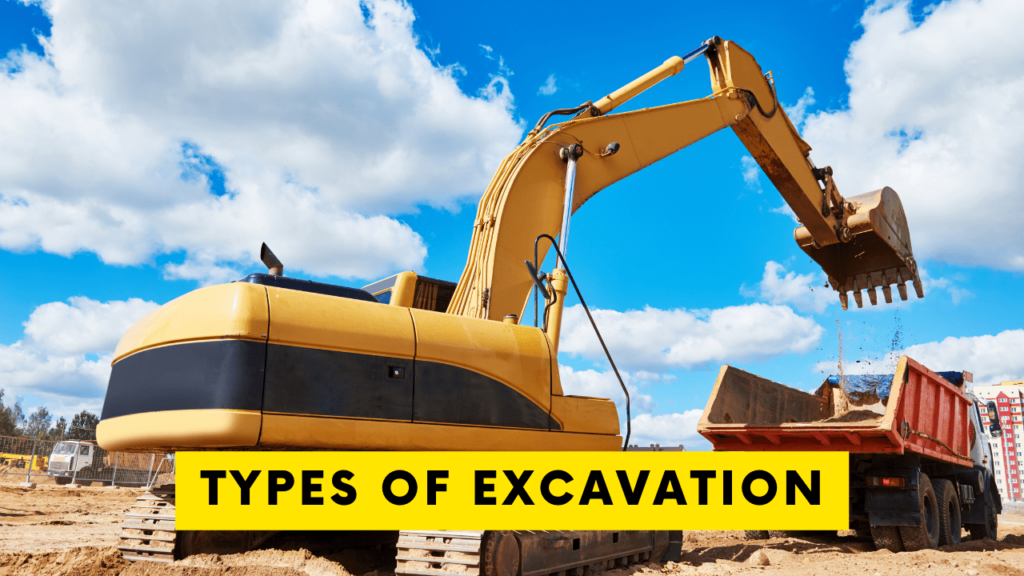Structural
Types of Excavation: Unveiling the Earth’s Secrets
Earth’s Secrets lie buried beneath our feet, waiting to be unveiled. Excavation, the process of removing earth, soil, or rock to create space or reveal hidden treasures, plays a pivotal role in unearthing these secrets. From the depths of trench excavation to the heights of open-pit mining, each type serves a unique purpose in shaping our physical landscape and unraveling Earth’s Secrets. In this exploration, we delve into the diverse world of excavation methods, understanding their significance and applications in bringing these secrets to light.
Introduction to the World of Earth’s Secrets: Excavation
Excavation is the heartbeat of construction and exploration, breathing life into projects by revealing the hidden layers beneath the earth’s surface. Its significance lies not only in creating space but also in unearthing valuable resources and shaping the foundations of our built environment. Earth’s Secrets, like long-lost civilizations or forgotten resources, are brought to light through this meticulous process.
2. Trench Excavation
Trench excavation, a fundamental method in construction, involves the creation of narrow and deep channels. Commonly used for laying utilities like pipes and cables, its precision is vital in ensuring the proper installation of essential infrastructure. The method focuses on depth rather than width, making it ideal for projects where space is limited.
3. Open-Pit Excavation in Mining
In the realm of mining, open-pit excavation stands as a testament to humanity’s quest for valuable resources. This method involves the removal of surface materials to expose deposits of minerals or other sought-after commodities. Open-pit mining has shaped landscapes and fuelled industries, providing access to the Earth’s hidden treasures.
4. Borrow Excavation for On-Site Material
Borrow excavation takes a sustainable approach to construction by acquiring materials on-site. By excavating material from one area (borrow pit) and using it in another part of the project, this method reduces the environmental impact associated with transporting materials over long distances. It’s a testament to responsible resource management in construction.
5. Dredging: Shaping Water Bodies
Dredging goes beyond solid ground, venturing into the depths of water bodies to unearth Earth’s Secrets. This method involves the excavation of sediment or debris to maintain navigation channels, reclaim land, or extract valuable materials. Dredging equipment, such as dredgers, scoops, lifts, and transports materials, ensuring the integrity of waterways while potentially uncovering Earth’s Secrets long buried beneath the waves.
6. Cut and Fill Excavation
In the world of landscaping and construction, cut and fill excavation is the artist’s brush, reshaping the canvas of the Earth. This method involves cutting soil from higher areas and filling lower areas, creating desired slopes and elevations. It’s an intricate dance with the topography, transforming natural landscapes into functional and aesthetically pleasing spaces.
7. Topsoil Excavation
Preserving the Earth’s skin is crucial in construction, and topsoil excavation ensures this delicate layer is treated with care. Before construction begins, the topsoil – rich in organic matter – is removed and stockpiled. Once the construction is complete, this topsoil is carefully reapplied, nurturing the land and preserving its fertility.
8. Foundation Excavation
The foundation of any structure begins with excavation. Creating a space for building foundations, basements, or footings requires precision and careful planning. Foundation excavation ensures that the structure stands on solid ground, guaranteeing stability and longevity.
9. Rock Excavation: Challenges and Techniques
Rock excavation tackles the Earth’s solid bones, presenting both challenges and opportunities in the pursuit of Earth’s Secrets. Breaking and removing rock require specialized techniques, including drilling, blasting, and the use of advanced equipment. In construction and mining, rock excavation is the key to accessing valuable resources and building on rocky terrains, all while potentially revealing Earth’s Secrets that have been locked away for millennia
10. Hydro Excavation: Precision Digging
Hydro excavation introduces water as a precision tool, delicately exposing underground utilities or delicate structures. Using high-pressure water to break up soil and a vacuum system to remove the resulting slurry, hydro excavation ensures accuracy, minimizing the risk of damaging critical infrastructure during the digging process.
11. Roadway Excavation
The arteries of our transportation networks rely on roadway excavation to take shape. This method involves preparing the ground for road construction, ensuring a stable and well-graded foundation for the pavement. Roadway excavation is the first step in building the essential infrastructure that connects communities.
12. Muck Excavation in Wetland Areas
Muck excavation navigates the challenges of soft, wet, or muddy soil, often encountered in wetland areas. Specialized equipment, including amphibious excavators and dredgers, is employed to handle these challenging conditions. Muck excavation is crucial in projects where traditional excavation methods may falter.
13. Shaft Excavation for Vertical Structures
For projects reaching new heights or depths, shaft excavation is the key to creating vertical or inclined openings, unlocking Earth’s Secrets along the way. Whether for tunnels, mines, or deep foundations, this method involves excavating from the top downward, providing access for construction or mining operations and potentially revealing Earth’s Secrets that have been buried for eons.
14. Trial Pit Excavation for Site Assessment
Before the first shovel hits the ground in a construction project, trial pit excavation takes centre stage. This method involves small-scale excavation to collect soil samples and assess subsurface conditions. Trial pit excavation is the initial step in understanding the unique characteristics of a site.
Conclusion
In conclusion, excavation is a multifaceted process that goes beyond mere digging. It is an art and a science, shaping landscapes, revealing resources, and laying the groundwork for human endeavors. From the precision of trench excavation to the grandeur of open-pit mining, each method serves a unique purpose, contributing to the intricate dance between humanity and the Earth. This dance allows us to not only build our future but also unearth the Earth’s Secrets, unlocking the mysteries of our planet’s past and shaping our understanding of the world around us.


